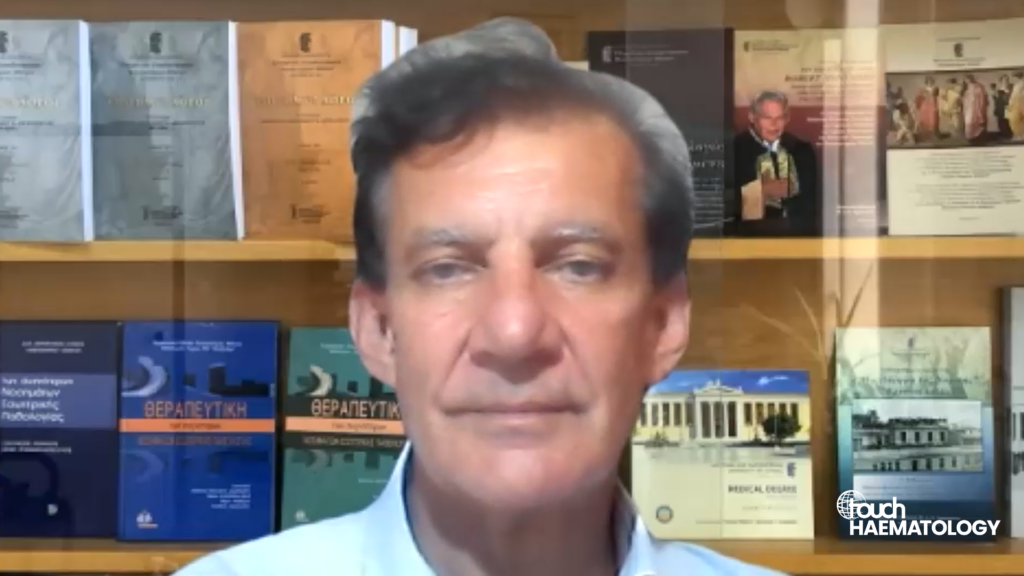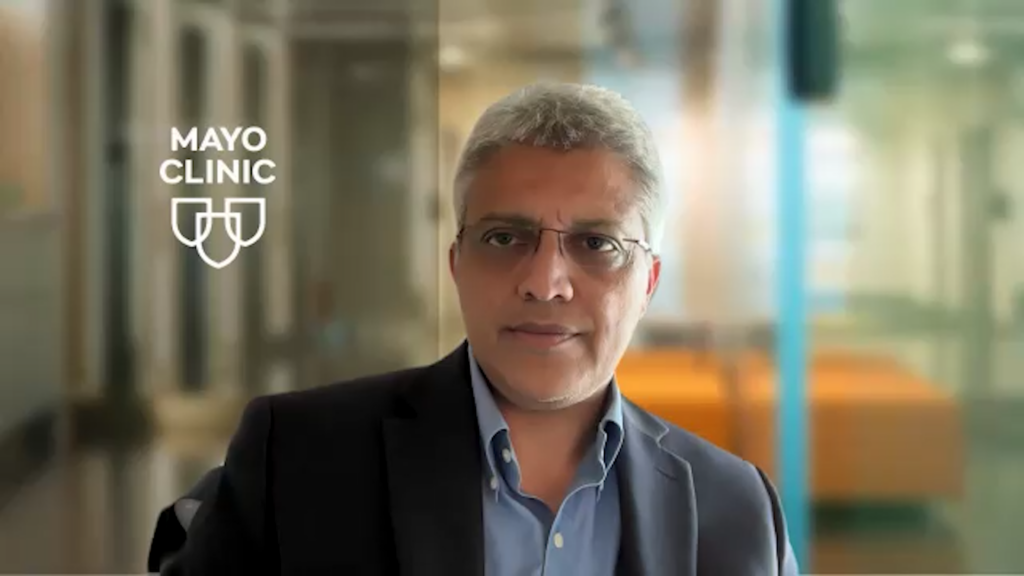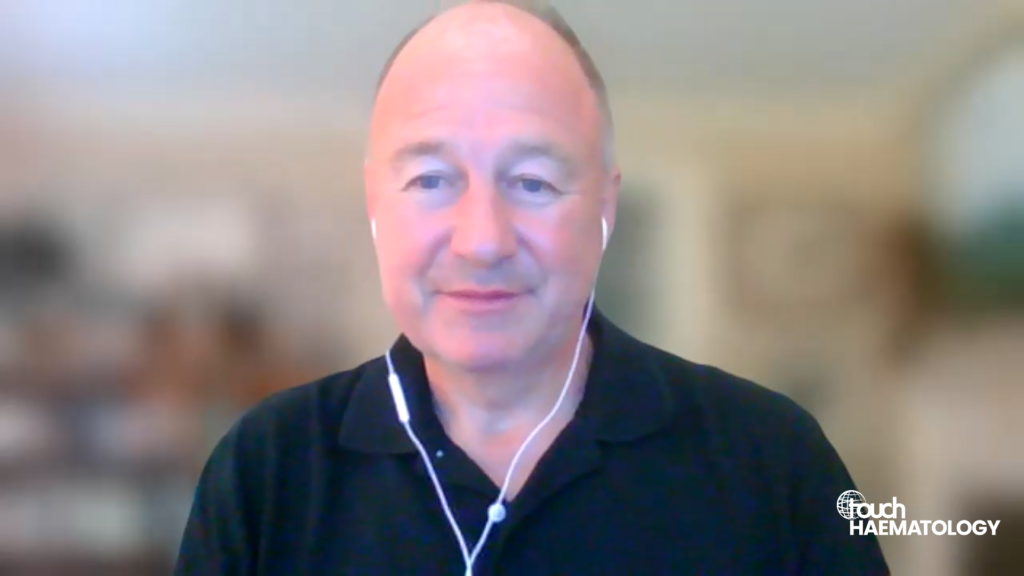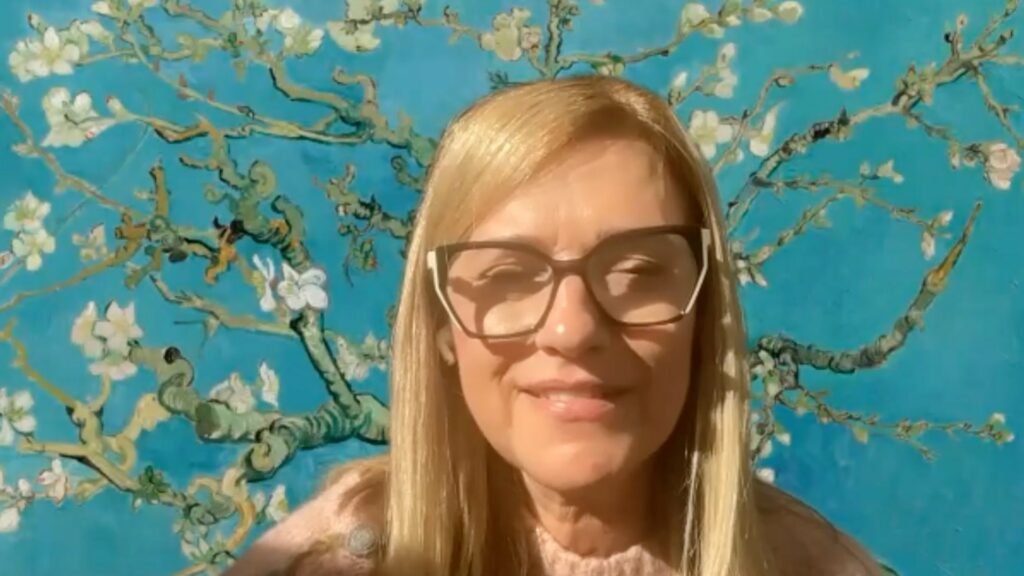touchHAEMATOLOGY coverage of data presented at EHA 2024:
The phase I/II CAMMA 2 study evaluates cevostamab, a bispecific antibody targeting FcRH5xCD3, in patients with relapsed/refractory multiple myeloma (RRMM) who are triple-class refractory and have received prior B-cell maturation antigen (BCMA)-targeted therapy. Initial results from Cohort A1 (21 patients) show a 67% overall response rate (ORR), with 38% achieving a very good partial response (VGPR) or better. Most common Grade 3-4 adverse events included neutropenia, anaemia, and thrombocytopenia. Cytokine release syndrome (CRS) occurred in 71%, managed effectively with tocilizumab or steroids. These findings suggest cevostamab’s promising efficacy and manageable safety profile in heavily pre-treated RRMM patients.
The abstract “Cevostamab In Patients With RRMM Who Are Triple-Class Refractory And Have Received A Prior Bcma-Targeted Adc Or CAR T- Cell: Initial Results From The Phase I/II CAMMA 2 Study” (Abstract number S210) was presented by Dr Shaji Kumar at the 29th European Hematology Association (EHA) 2024 Congress on 13–16th June 2024 in Madrid, Spain.
Questions
- Please could you describe the rationale and background behind the phase I/II CAMMA trial? (0:09)
- What were the initial efficacy findings from the CAMMA trial that were presented at the EHA 2024 Annual Congress? (1:28)
- What did data from the CAMMA trial tell us about the safety profile of cevostamab? (2:15)
- What do you think are the implications of these findings for the future? (4:04)
Disclosures: Dr Shaji Kumar has received consultancy fees from AbbVie, Amgen, Antagene, AstraZeneca, Beigene, BMS, Genentech, GSK, Oncopeptides, and Sanofi; research funding from AbbVie, Amgen, AstraZeneca, Bayer, BMS, Carsgen, Celgene, Genentech, Genzyme, GSK, Janssen, Millennium, Novartis, Sanofi, and Takeda; and holds membership on a Board or Advisory Committee for Janssen and Takeda.
This content has been developed independently by Touch Medical Media for touchHAEMATOLOGY. It is not affiliated with the European Hematology Association (EHA). Unapproved products or unapproved uses of approved products may be discussed by the faculty; these situations may reflect the approval status in one or more jurisdictions. No endorsement of unapproved products or unapproved uses is either made or implied by mention of these products or uses by Touch Medical Media or any sponsor. Views expressed are the speaker’s own and do not necessarily reflect the views of Touch Medical Media.
Abbreviations: ADC, antibody-drug conjugate; BCMA, B-cell maturation antigen; CAR, chimeric antigen receptor; ICANS, immune effector cell-associated neurotoxicity syndrome; IL, interleukin; RRMM, relapsed/refractory multiple myeloma
Transcript:
Hi. My name is Shaji Kumar. I’m a haematologist at Mayo Clinic in Rochester, Minnesota.
Please could you describe the rationale and background behind the phase I/II CAMMA trial? (0:09)
At the recently concluded, European Hematology Association meeting, I presented the results of a phase I/II trial, CAMMA II trial that looked at the efficacy and safety of a bispecific antibody targeting FcRH5 in patients with relapsed/refractory multiple myeloma, specifically focusing on those patients who have previously received a BCMA targeted, ADC, or CAR T therapy. As you all know, we have two CAR T [cell therapies] and three different bispecifics that are currently approved and in the clinic for treatment of multiple myeloma. The two bispecifics that we have in the clinic are targeted either towards BCMA or GPRC5D. Given that [the] majority of these patients eventually relapse, we are always trying to explore new therapies and new modalities in order to keep the disease under control.
Cevostamab is a unique, bispecific antibody that’s targeting FcRH5, an antigen that is present on most B cells and particularly, with a higher expression on the plasma cells. Now, previous studies have shown that this is an active, bispecific antibody with responses comparable to other bispecific antibodies out there.
What were the initial efficacy findings from the CAMMA trial that were presented at the EHA 2024 Annual Congress? (1:28)
In this particular trial, we have results from 21 patients, 11 patients who had prior CAR T [therapy] and 10 patients with prior ADC [therapy]. The patients are quite comparable except that the patients in the prior ADC group had higher disease burden and also appeared to have more aggressive disease in terms of presence of extramedullary disease and high-risk target genetics.
Now, in the study, we found that overall, nearly two-thirds of the patients actually responded to therapy. The responses were slightly lower in the ADC group, particularly the proportion of patients with the responses, like, with partial responses lower.
What did data from the CAMMA trial tell us about the safety profile of cevostamab? (2:15)
In terms of the toxicity, the haematological toxicity was commonly seen in about 40–50% of these patients – neutropenia and thrombocytopenia. We did see cytokine release syndrome, in about, 60–70% of patients. This was higher, in the, prior ADC group, which is not surprising given that they had more disease. It was mostly grade one and grade two and was easily manageable. Nearly 40% of the patients ended up receiving tocilizumab.
Neurological toxicity, was not common. There were one patient each, with ICANS in each group and one grade for ICANS, which was seen in a patient with prior history of epilepsy who had to come off the study.
Infections were relatively common with almost a third of the patients having a grade three, or higher, infection. Amongst the infections, nearly a third were viral. COVID in four patients, a third were bacterial in nature, and [for] another third the organism was not identified.
In terms of durability, the median follow-up is only about, 11 months, so it’s hard to say, but we do have patients with extramedullary disease, as well as patients who have been exposed to both ADC and, CAR T [cell therapies], [who] respond to cevostumab.
Correlated studies were also performed, and this demonstrated that the effector T cells were higher in patients responding to therapy. We also noticed higher levels of IL-6 in patients with prior ADC [therapy] who also had more cytokine release syndrome.
What do you think are the implications of these findings for the future? (4:04)
So, overall, this study demonstrates that cevostumab is effective in this patient population who have previously seen a BCMA-targeted therapy. We don’t have the data for prior bispecific antibodies. That is a separate cohort of patients that is currently being studied. So the study continues to provide the basis for ongoing evaluation of cevostumab, particularly in this patient population.
Interviewer/Editor: Helen Bowden
Cite: Kumar S. Cevostamab in triple-class refractory RRMM: The CAMMA 2 Study. touchHAEMATOLOGY. July 29 2024.






